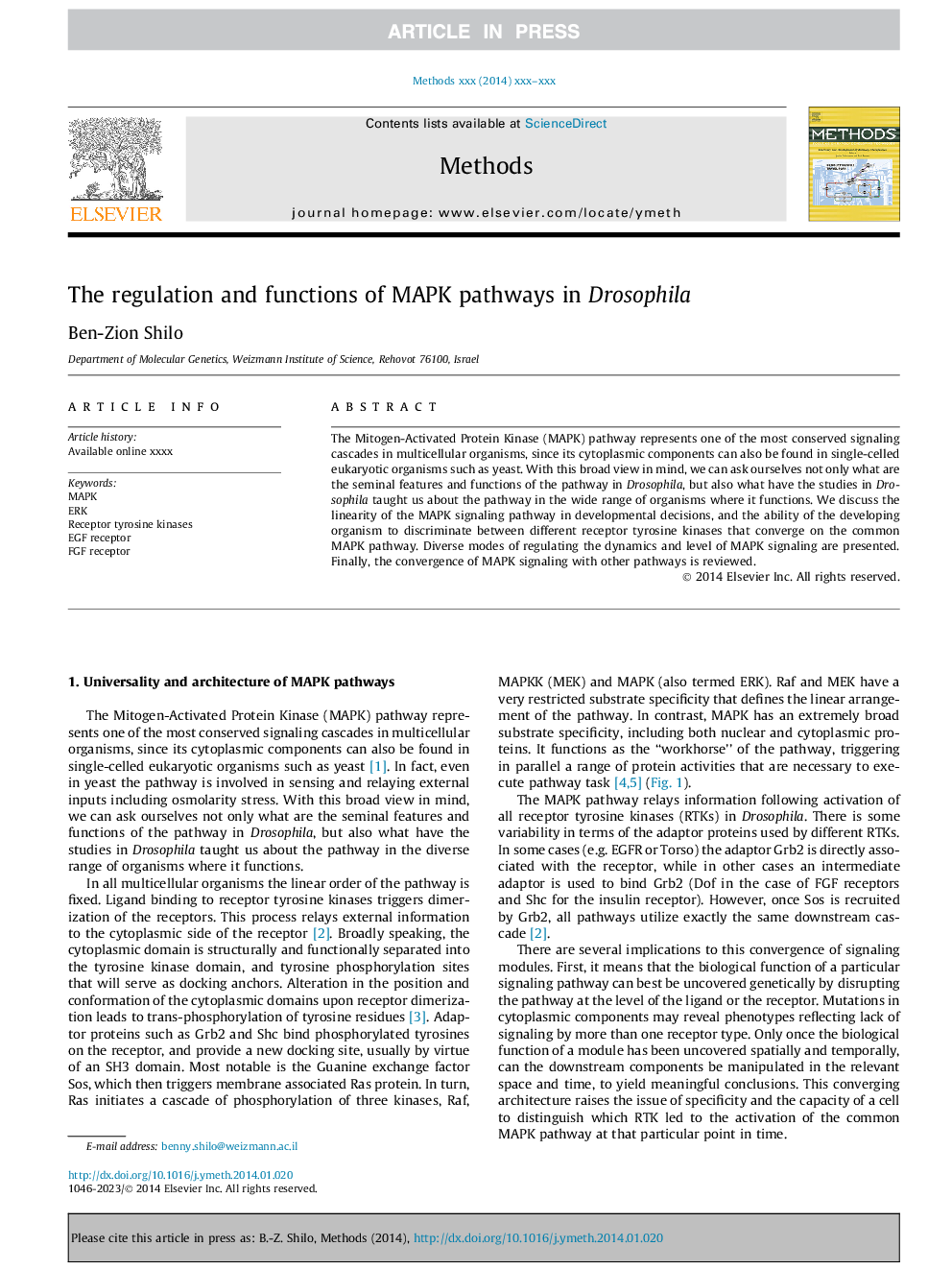| Article ID | Journal | Published Year | Pages | File Type |
|---|---|---|---|---|
| 10825704 | Methods | 2014 | 9 Pages |
Abstract
The Mitogen-Activated Protein Kinase (MAPK) pathway represents one of the most conserved signaling cascades in multicellular organisms, since its cytoplasmic components can also be found in single-celled eukaryotic organisms such as yeast. With this broad view in mind, we can ask ourselves not only what are the seminal features and functions of the pathway in Drosophila, but also what have the studies in Drosophila taught us about the pathway in the wide range of organisms where it functions. We discuss the linearity of the MAPK signaling pathway in developmental decisions, and the ability of the developing organism to discriminate between different receptor tyrosine kinases that converge on the common MAPK pathway. Diverse modes of regulating the dynamics and level of MAPK signaling are presented. Finally, the convergence of MAPK signaling with other pathways is reviewed.
Related Topics
Life Sciences
Biochemistry, Genetics and Molecular Biology
Biochemistry
Authors
Ben-Zion Shilo,
